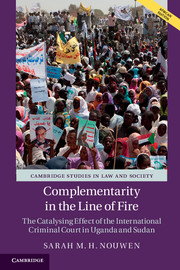Pour qu’un héritage soit réellement grand, il faut que la main du défunt ne se voie pas.
In 2014, a year of memorial ceremonies commemorating the twentieth anniversary of the Rwandan genocide, the International Criminal Tribunal for Rwanda (ICTR) marked its own twentieth year with the launch of a “legacy website.” With the closing of the Tribunal scheduled for December 2015, the question of its legacy had become increasingly pressing. The website premiered a video that “celebrates the accomplishments of the ICTR” in a “visually compelling” style. Blurring the distinction between documentary account and film trailer, the video begins with iconic images of the African continent: a boy rolling a hoop down a dirt road; laborers ferrying wares; women in colorful dresses tending children. These scenes of daily life are interrupted by images of men wielding machetes and corpses, interspersed with the figure of the radio, reminding the viewer that the 1994 genocide was encouraged through broadcasts inciting Hutus to take up arms against their Tutsi neighbors. The video lists the Tribunal’s contributions to international criminal law, but also describes a much broader impact: “a record of legal reform in Rwanda, and outreach, education, legal training, and healing.” Young boys leap into a body of water to punctuate the final term, suggesting the hope of a new Rwanda. The narrator proclaims, “today in Rwanda, it’s safe to listen to the radio again: the sound is of a nation rebuilding.” The film’s final words reach beyond the Rwandan context, affirming that ours is “a world pushing forward despite great imperfection, each day closer to a time when international law offers justice to all people, everywhere.”
